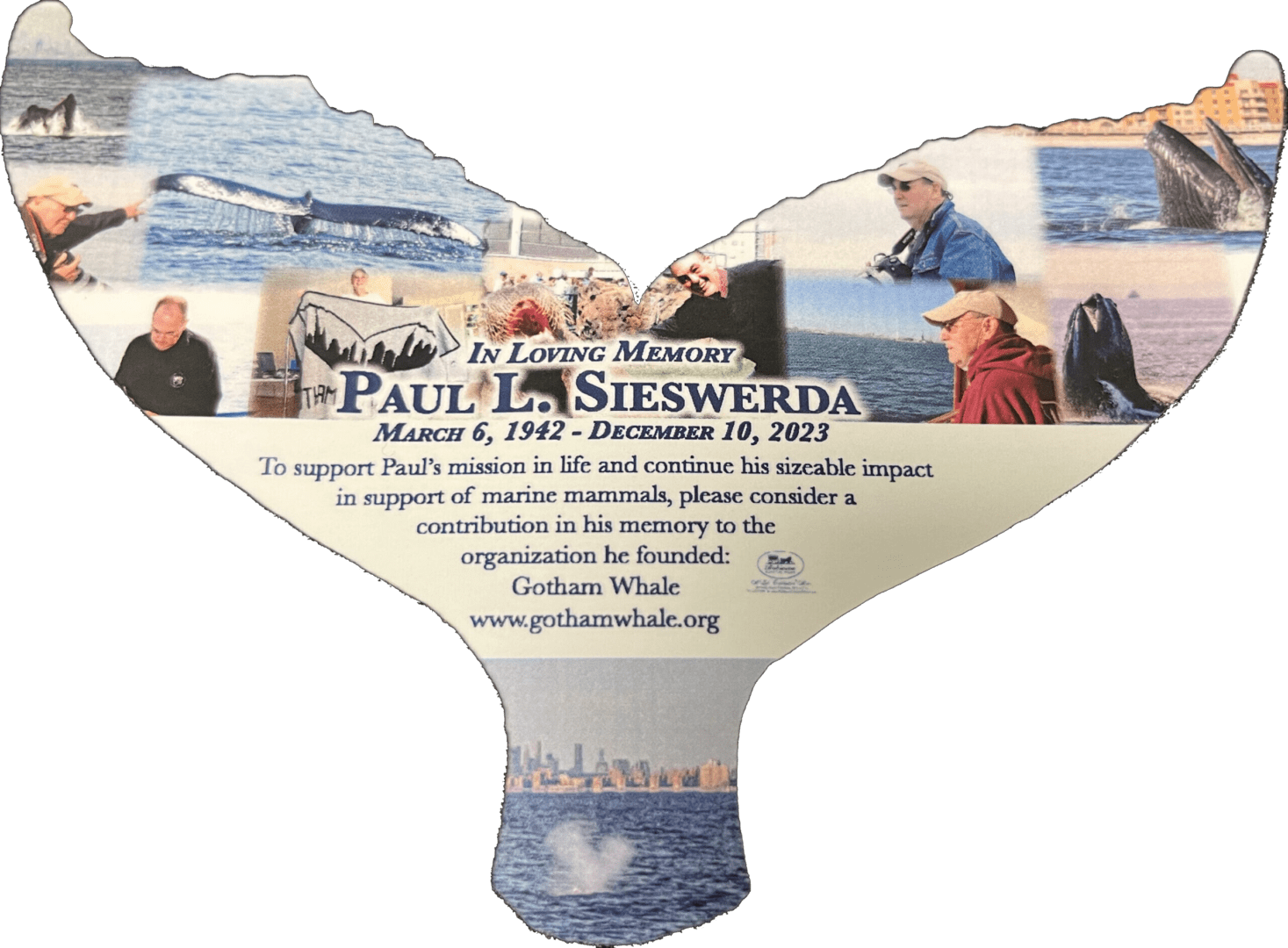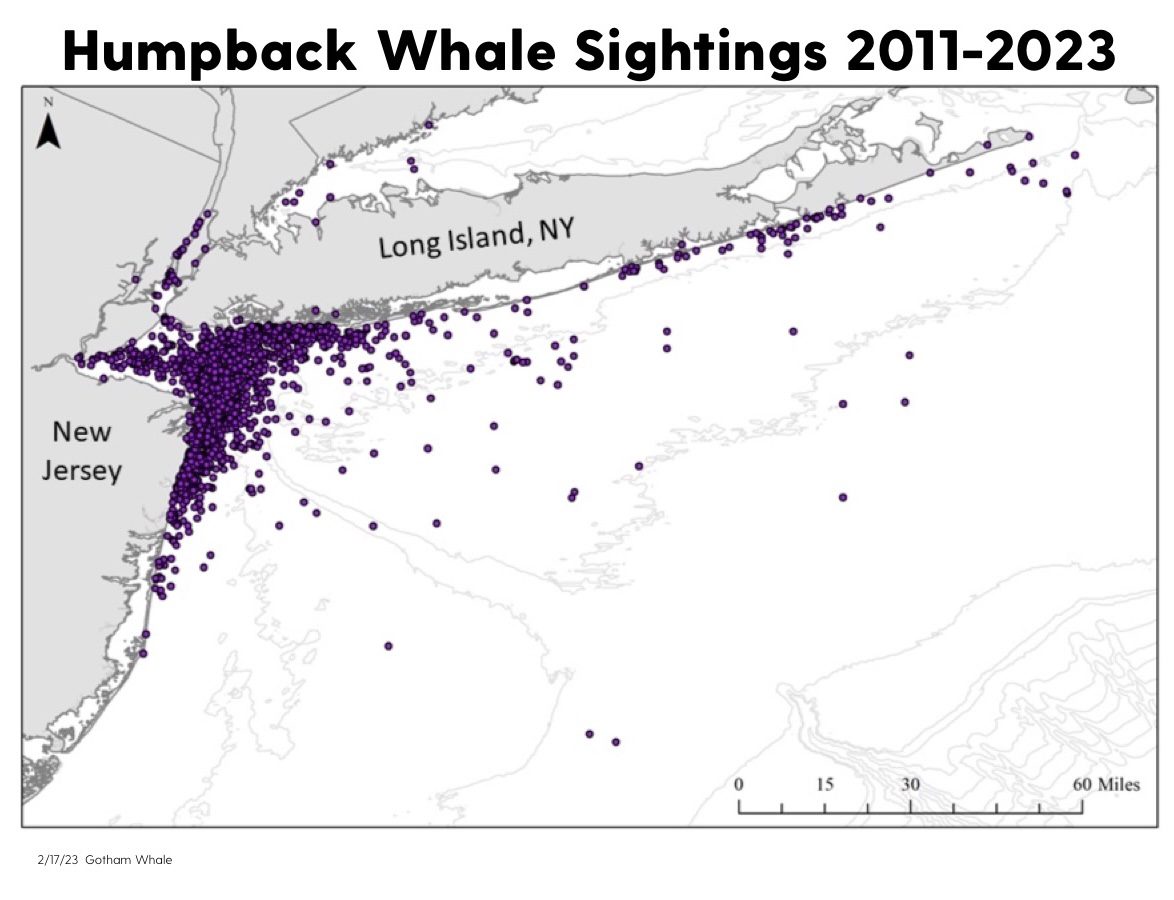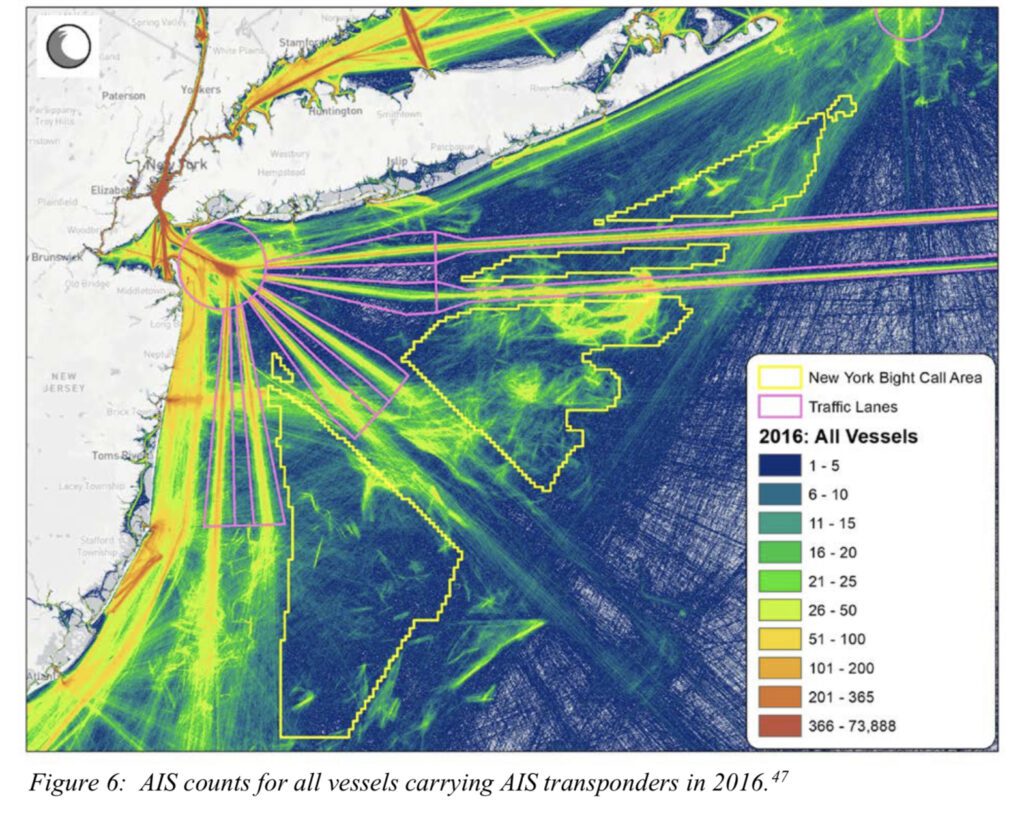Update About Increased Sightings & Recent Strandings - FAQ
updated 03/06/2023
Since 2011, Gotham Whale has been collecting data on the whales and dolphins in the waters around NYC. The increase in sightings has been remarkable. Using Citizen Science, we collect contributions from volunteers on whale watch vessels, fisher and boater reports and observations by beach walkers along the shoreline. Our first season aboard the American Princess recorded only 3 whale sightings (more than one whale may be present at a single sighting) with a total of 5 whales. Since then, the numbers have increased a hundredfold. This past season (2022), Gotham Whale recorded over 600 sightings. Our effort also increased, as we now receive reports from the growing number of whale watching vessels along Long Island and the Jersey shore, but the numbers do suggest that whales in our area have increased dramatically. Gotham Whale has catalogued more than 300 individual humpback whales in our waters over the past 12 years, including adding 51 new whales to the NYC Humpback Whale Catalog this past season. Our research has shown that individual humpback whales now stay in the NYC area for an extended period of time and return year after year.
FAQs:
Why are the whales coming to the NY/NJ area?
Our research suggests that many whales are feeding on “bunker” or Atlantic menhaden; a bony, oil filled fish that few people, except for fishermen, have heard of. These filter feeding fish that appear in great schools appear to have increased in the waters around NYC. We are not exactly sure why menhaden have increased, but we do know that our oceans are changing. Some suggest that an increase in ocean temperature in the North Atlantic may be a factor in the increase in menhaden in our area. It has also been suggested that this change in temperature is leading to a decline in prey species in other areas. We believe that these factors, combined with conservation efforts along the Hudson River since the 1970s have culminated in an attractive environment for the menhaden. The whales, and other species, may be coming to NYC for good dining. Gotham Whale works in collaboration with other menhaden defenders to protect this forage fish from overfishing.
Has there been an increase in shipping into the port of NY/NJ?
In September 2022, it was widely reported that NY Harbor had become the busiest port in the nation. We see some of the largest tanker, cargo, and cruise ships move through our area. The investment in accommodating the super ships has been amazing. For example, the Bayonne Bridge was raised recently, and the channels were deepened to allow the huge container ships, cruise ships, tankers and bulk haulers to expand the capacity of the port. One unseen investment in this expansion was the “siphon project” that brings water to Staten Island. In order to dredge the channel deeper, the old “siphon”, or water main to the island, had to be replaced and reinstalled. A tunnel, bored through bedrock, was dug to accommodate a new “siphon”. The huge cost of this project is a prime example of how no expense has been spared when it comes to shipping. Increases in shipping and in the size and speed of vessels means that there is more overlap with whales, and a higher likelihood of vessel interactions. In April of 2022, we launched our 'Hey! we're swimming here.' initiative where we are sharing the stories of whales such as 'Jerry' and NYC0089 who have experienced vessel strike.
What about the recent whale deaths?
Gotham Whale is no stranger to whale strandings. Since we began documenting whales in 2011, there have been numerous whale strandings, including many whales that we have catalogued and seen alive and healthy in our waters. This makes the cause of death of these animals of great interest to us. The evidence for the cause of death is collected by our colleagues in the Greater Atlantic Region Stranding Network. The Atlantic Marine Conservation Society is responsible for responding to stranded marine mammals in NY and the Marine Mammal Stranding Center in Brigantine covers the Jersey shore. These organizations are authorized to conduct necropsies on large whales. In many of the strandings that have occurred since 2011, and most recently since December 1, 2022, there has been evidence of vessel strike including severe hemorrhaging and broken bones. To us, this makes sense because we have documented many vessel interactions over the years, including close calls between whales and ships. We also know that many of the whales we document feed inside the NY/NJ Harbor Estuary and in major shipping channels. Therefore, we have no reason to believe that these whales died from anything other than vessel strike. Gotham Whale is well aware that there are many other risks to whales in the NYC area other than vessels, including entanglements in fishing gear, plastic pollution, harassment, etc. Therefore, we will continue to advocate for better management of whales from all potential risks.
Why are so many vessel strikes happening in such a short time period?
Here are some potential factors:
Factor 1: A change in the distribution of prey. Recent observations show whales feeding in the NY/NJ area during winter, a season when we typically do not have many whale sightings close to shore. Menhaden, an inshore species, are also apparently abundant, and even the striped bass season is starting early. The whales we have documented this winter have been seen lunge feeding, a behavior that puts them at particular risk at the surface. Perhaps the warmer temperatures are bringing the fish, and therefore the whales into areas of high ship traffic. Unfortunately, research on the distribution and abundance of Atlantic menhaden in our area is lacking, so we can only speculate on this.
Factor 2: Whales have changed their migration pattern. Young humpback whales are known to use the waters off Virginia Beach as a winter feeding ground. However, this year, they appear to be using the NY/NJ area as a winter feeding ground as well. This explains why we have been receiving regular reports of whales, even though there are far fewer boats in winter to report sightings. We have added 15 new ID’s to our catalog since December, which is more than any other winter season since 2011. An increase in whales in any busy area increases the likelihood of human interaction. Again, we are not exactly sure why this has happened, but we do believe that it is related to the warm winter we have been having. The ocean water temperature is nearly 10 degrees warmer than it usually is this time of year.
Can you respond to the other circulating theories?
Theory 1: The offshore mapping process for the development of wind farms is disrupting their navigation, causing them to be hit by ships. This theory has generated considerable controversy and is based on some misconceptions.
Some of the misconceptions are as follows:
-
- Misconception 1: The SONAR used for the survey work could injure whales.
Gotham Whale bases all opinions on science. To date, there have been no published scientific studies that show that baleen whales become injured by the sonar equipment used by survey vessels. Survey work is conducted off NY and NJ constantly for many different industries (not just offshore wind). We have never seen the unprecedented increase in strandings as we have this winter. It is known that some types of sonar will cause minor changes in behavior such as stopping feeding and traveling out of the area. Therefore, the permitting process for any survey work requires independent observers onboard, and survey companies MUST shut down the sonar when there are whales around. This is required in their permitting, and if they don’t do this, they are subject to significant fines for violating the Marine Mammal Protection Act. One would expect that these companies would want to strictly follow the rules, since they are now currently in the public eye, in light of the recent increase in strandings.
-
- Misconception 2: The SONAR could interfere with the whale’s echolocation, disrupt the navigation abilities of the whales and make them prone to ship strike.
The majority of whales recently washed ashore are baleen whales that DO NOT USE echolocation for navigation or communication. It is only toothed whales that have this capacity. Again, similar to above, there have been no published scientific studies that show that the type of sonar being used by survey vessels around the world could affect baleen whales’ navigation ability.
Gotham Whale has contacted OSW representatives directly and asked for assurance that their operations are not harmful to the whales. Asked, “How can we be sure you are conducting these activities safely for the whales?” The answer was, “Because it is the LAW.”
Remember, the permitting process is a rigorous proposal that the developers must outline their methods and practices for review by stakeholders. There is public review and comment periods to ensure concerns are met. If they violate the conditions of the permit, they are subject to fines and penalties under the Law. Gotham Whale accepts that the operators are complying with their permits, unless we are given evidence otherwise.
- Misconception 3: Whales would be able to avoid vessels if they were not disoriented by SONAR. Dolphins play in bow wake and are therefore safe from vessel collision.
Research indicates that speed is a major factor in the likelihood and severity of ship strike. While size is a factor, even small vessels and jet skis can cause injury or mortality for wildlife. Additionally, approaching ships may be difficult for a whale to detect because the sound of a large vessel’s engine can be blocked by the hull. This is called the “bow null effect”.
Dolphins are often observed surfing in the wake from a vessel’s bow. This does not mean they are never hit by vessels. NOAA’s viewing marine life guidelines specifically warn against intentionally trying to to initiate bow riding. If marine mammals do initiate, it’s important to avoid sudden changes in speed or direction
- Misconception 4: Offshore wind companies are currently allowed to “take” and therefore kill marine mammals.
A “take” does not have to mean kill. NOAA also defines any type of behavioral change as a “take.” This means that if a whale is in the area and it decides to stop feeding and come over to check out your boat, that would be considered as a “take.” Therefore, conducting ANY type of construction or research activity that could cause whales to change their behavior requires a “take” authorization. There is a type of “take” authorization that does include potential serious injury or mortality to whales, but to date these have NOT been issued to any company for offshore wind surveys. This means that if their activities do cause any serious injury or mortality, they are subject to fines and other consequences. The type of “take” MUST be specified in the permit application. The active permit applications for current surveys are publicly available and clearly state that the authorizations requested are non-lethal. Additionally, in these permit applications, you will also see the extensive mitigation measures that are required of any company conducting surveys, including a complete stop to any survey activities when there are whales in the area.
- Misconception 5: Offshore wind companies are “paying” off scientists and other organizations.
Offshore wind companies are REQUIRED by the government to contribute money to marine mammal, bird, bat, fish, etc. research to monitor and mitigate the impacts from offshore wind. It is not necessarily because they want to. It is because they have no choice. Gotham Whale feels that these companies absolutely should be funding research activities, since they will ultimately be affecting the marine environment in some way. The offshore wind industry has millions of dollars to spend, so it should be put to good use.
Theory 2: Surveying sounds cause the whales to surface or change direction forcing them into the shipping lane.
Minimal changes to behavior or location is expected due to the increased vessel activity or underwater noise from wind farm surveying/construction. During the BOEM analysis of recommended wind energy areas in the New York Bight, existing shipping fairways were avoided. Two of these fairways run along the coast of NJ and southern shore of Long Island. According to research by Gotham Whale and others, the whales were already present in these areas prior to the commencement of wind surveying. (See maps below) Additionally, these whales were frequently observed lunge feeding which occurs at the water’s surface. Spending more time near the surface can make them more vulnerable to collision.


